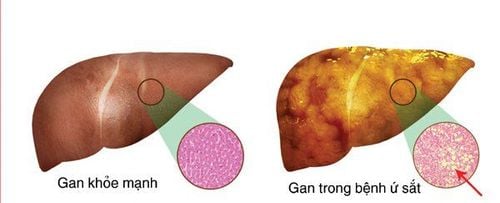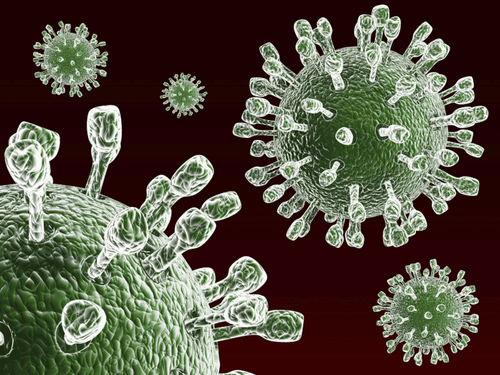This is an automatically translated article.
The article is professionally consulted by Master, Doctor Nguyen Minh Tuan - Pediatrician - Department of Pediatrics - Neonatology - Vinmec Danang International General Hospital. Doctor Tuan has over 27 years of experience in the field of Pediatrics and used to be the Deputy Department of General Pediatrics - Da Nang Obstetrics and Gynecology Hospital. Her strengths are in treating immunological diseases, allergies in children, consulting on urological, neurological, hematological, and endocrine diseases in children.And Master, Doctor Truong Thanh Tam - Pediatrician - Department of Pediatrics - Neonatology - Vinmec Danang International General Hospital. Dr. Tam has 15 years of experience working in the field of Pediatrics.
Thalassemia in children causes hemolytic anemia, which is considered a burden on families and communities, causing serious consequences for the race. The treatment of hemolytic anemia requires a lot of effort, time and compliance from the patient.
1. Is thalassemia curable?
Thalassemia is essentially an inherited anemia. Whether thalassemia is curable depends on the individual patient's condition, when treatment is not necessary. Patients need to perform diagnostic tests for thalassemia, from which the doctor can choose the right treatment for hemolytic anemia, depending on the type and severity of the disease.
People with the alpha or beta anemia of thalassemia often have mild symptoms or no symptoms and will need little or no treatment. As for more severe cases, the methods commonly used in treatment are: Blood transfusion, chelation therapy, splenectomy and hematopoietic stem cell transplantation.
2. Methods of treating hemolytic anemia
Currently, the main methods used in the treatment of thalassemia include:2.1. Blood transfusion
Blood transfusion is mainly applied when treating patients with moderate or severe anemia. This method provides the patient with a healthy amount of red blood cells with normal hemoglobin.
During the procedure, the doctor will give blood through a vein. This procedure usually takes 1 to 4 hours. The blood cells received only live for a cycle of about 120 days. Therefore, patients need lifelong blood transfusions to maintain a healthy supply of life-giving red blood cells. For subjects with hemoglobin H disease or moderate beta anemia, more frequent transfusions are likely. For example, people need a blood transfusion when they have an infection or other illness that involves blood loss, or when severe anemia causes severe fatigue. In the case of severe beta-anemia (Cooley's anemia), the patient will need continuous blood transfusions every 2 - 4 weeks.
Blood transfusion for hemolytic anemia maintains hemoglobin level and red blood cell concentration within normal limits, helps patients get better and can participate in normal activities, live well into adulthood. Fort.
2.2. Iron chelation treatment
The hemoglobin present in red blood cells is an iron-rich protein. Therefore, frequent blood transfusions inadvertently lead to an accumulation of iron in the blood. This phenomenon, called iron overload, causes damage to the liver, heart, and other parts of the body.
To prevent the above complications, doctors must use chelation therapy to remove excess iron from the body. Iron chelation should be initiated when serum ferritine is above 1000 ng/mL, usually after infusion of about 20 units of erythrocyte sedimentation.

2.3. Splenectomy for hemolytic anemia
Splenectomy is only applied when blood transfusion is ineffective or the spleen is too large, causing pain and affecting the patient's activities.2.4. Hematopoietic stem cell transplant (marrow transplant)
Hematopoietic stem cell transplantation is applied to treat severe hemolytic anemia, is currently the most advanced method with the ability to cure the disease and has been used in some leading major hospitals in Vietnam. . However, the limitation of this method is that it is difficult to find suitable people who agree to donate stem cells.Thalassemia is not an infectious disease such as tuberculosis, hepatitis ... but a genetic disease because the patient was born with both disease genes from his father and mother.
If two people who carry a mild disease gene get married, there is a 25% chance that the child will have severe thalassemia during pregnancy, because the child's genome has inherited the disease gene from both parents. for; 50% chance that the child will have a mild disease due to receiving a disease gene from the father or mother; The remaining 25% of children avoid the risk of disease. To know if your child is carrying a disease gene, the only way is to take preventive measures such as: Screening and preventing disease early, screening for early detection of diseases for the fetus.
3. How to limit thalassemia?
Married couples who are about to become pregnant or are pregnant, especially with families who have had a family member with thalassemia, should receive pre-marital counseling and diagnosis.
If both husband and wife carrying the same form of thalassemia are married, they should be carefully counseled about the possibility of the disease in their children before planning to become pregnant. If pregnancy has been decided, the mother should be diagnosed before birth when the fetus is 12-18 weeks old, at medical facilities specializing in obstetrics, hematology and genetics.
Thalassemia, although causing serious consequences, is a completely preventable disease. Therefore, getting information and counseling, screening for disease genes early, before marriage or before giving birth will limit the risk of having children with genes or diseases, contributing to ensuring population quality for the whole community.
As a key area of Vinmec Health system, Pediatrics Department always brings satisfaction to customers and is highly appreciated by industry experts with:
Gathering a team of top doctors and nurses in Pediatrics : consists of leading experts with high professional qualifications (professors, associate professors, doctorates, masters), experienced, worked at major hospitals such as Bach Mai, 108.. Doctors All doctors are well-trained, professional, conscientious, knowledgeable about young psychology. In addition to domestic pediatric specialists, the Department of Pediatrics also has the participation of foreign experts (Japan, Singapore, Australia, USA) who are always pioneers in applying the latest and most effective treatment regimens. . Comprehensive services: In the field of Pediatrics, Vinmec provides a series of continuous medical examination and treatment services from Newborn to Pediatric and Vaccine,... according to international standards to help parents take care of their baby's health from birth to childhood. from birth to adulthood Specialized techniques: Vinmec has successfully deployed many specialized techniques to make the treatment of difficult diseases in Pediatrics more effective: neurosurgery - skull surgery, stem cell transplantation. blood in cancer treatment. Professional care: In addition to understanding children's psychology, Vinmec also pays special attention to the children's play space, helping them to have fun and get used to the hospital's environment, cooperate in treatment, improve the efficiency of medical treatment.
Please dial HOTLINE for more information or register for an appointment HERE. Download MyVinmec app to make appointments faster and to manage your bookings easily.














